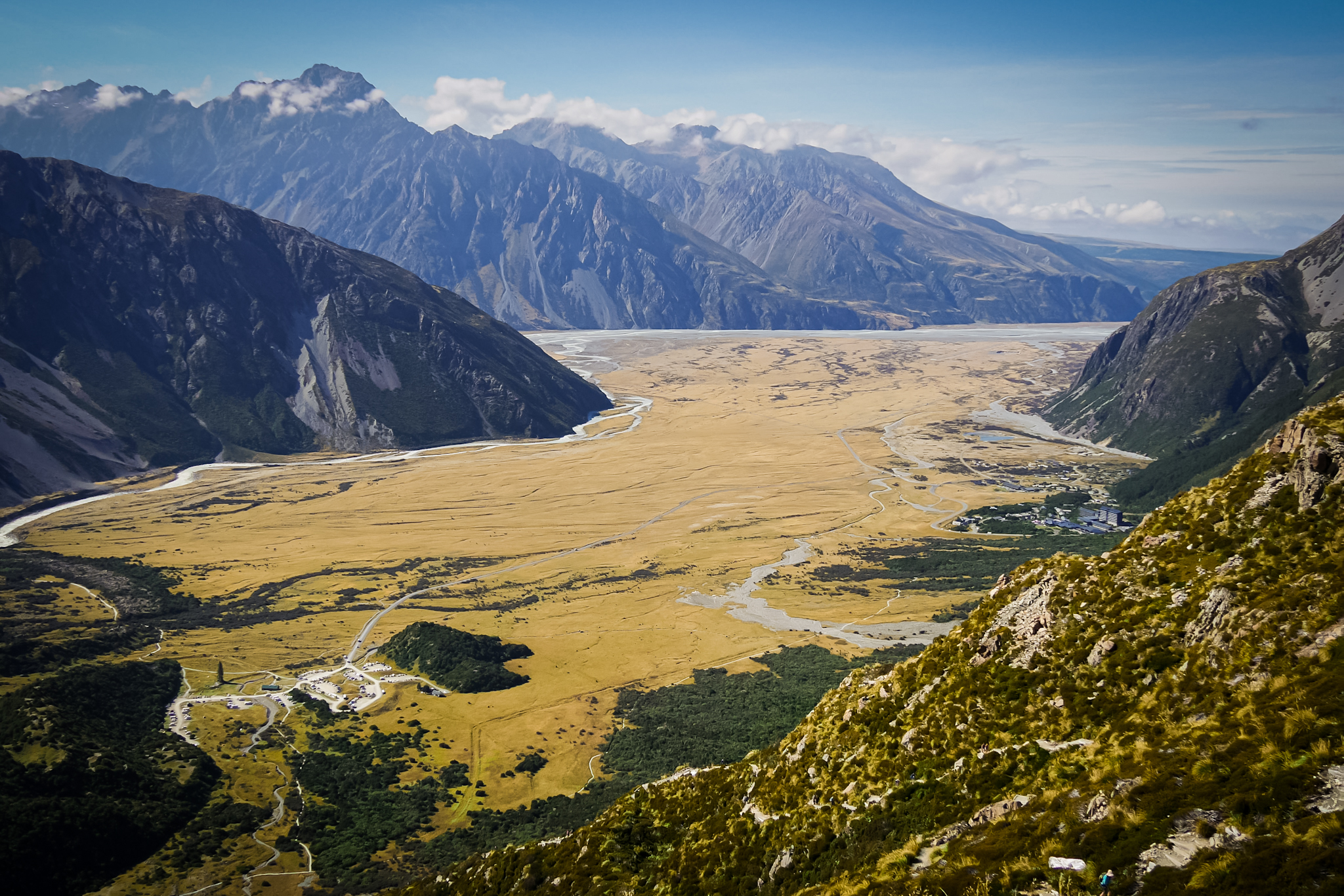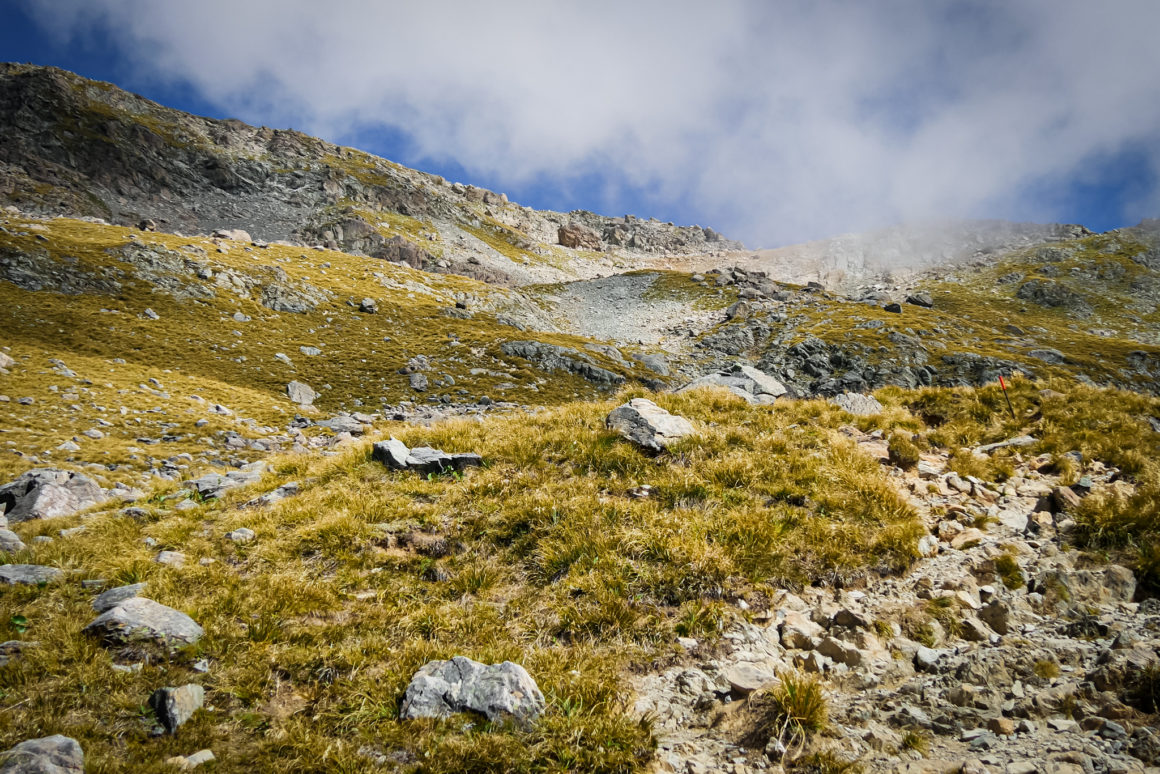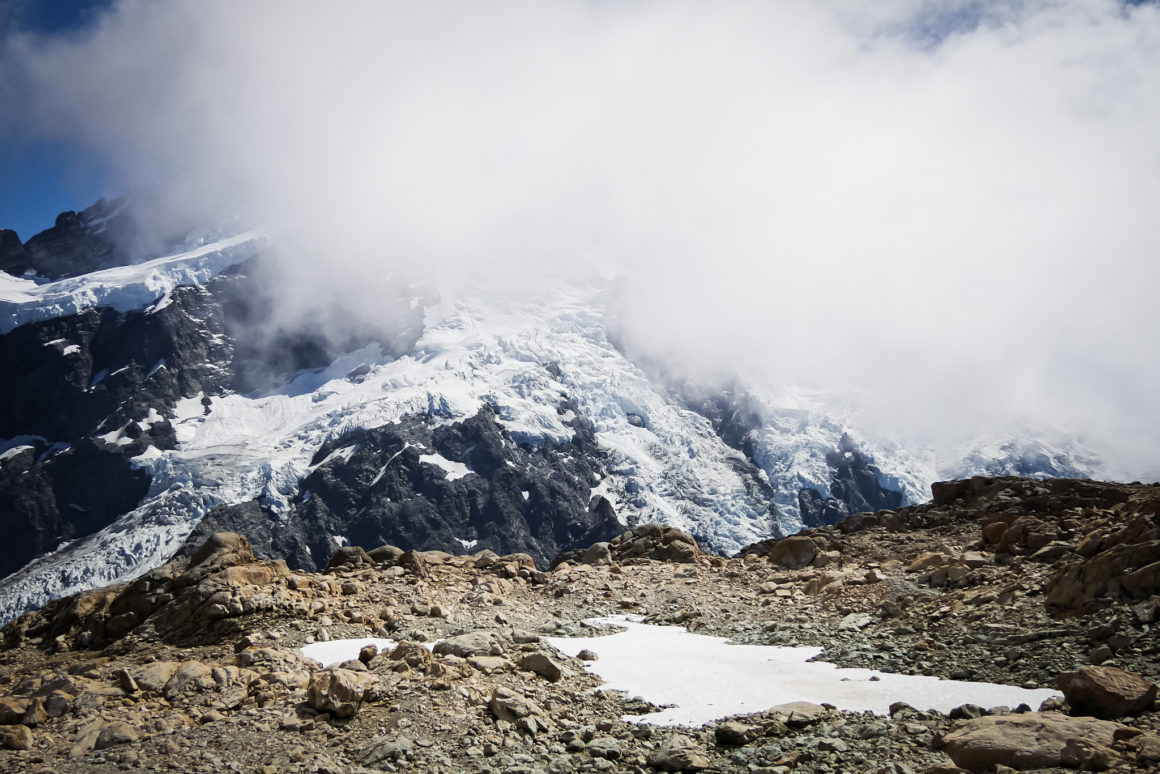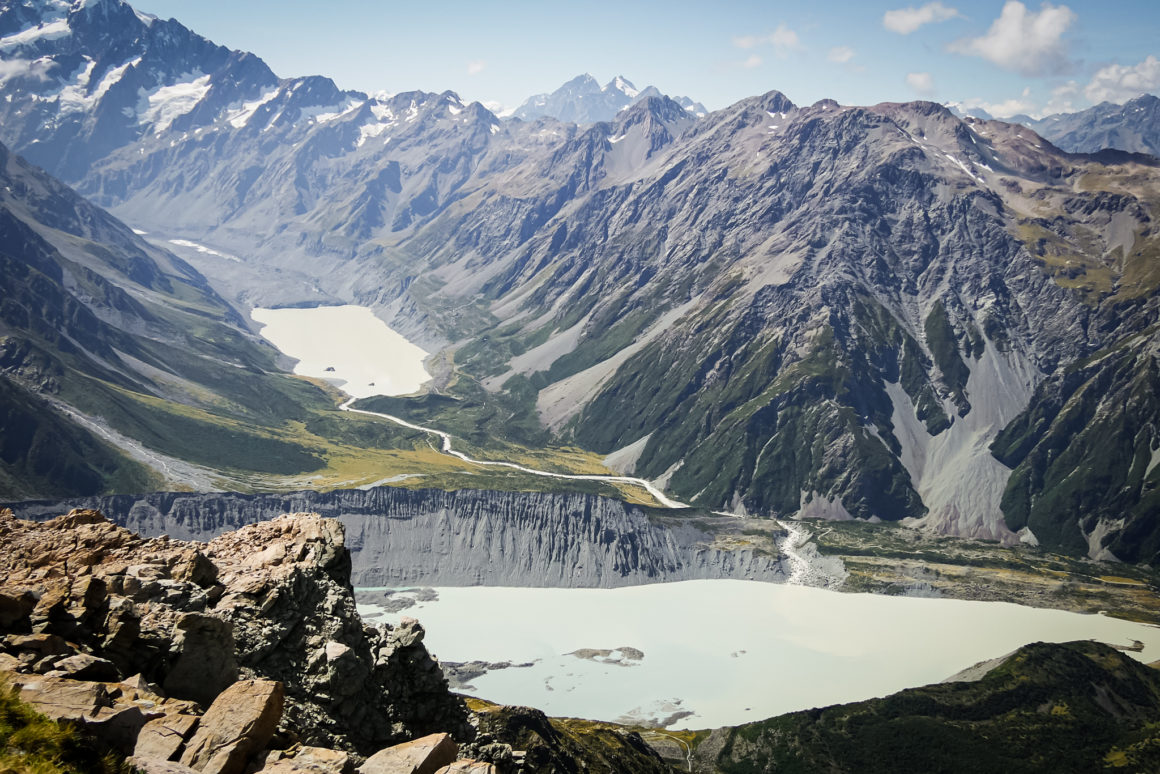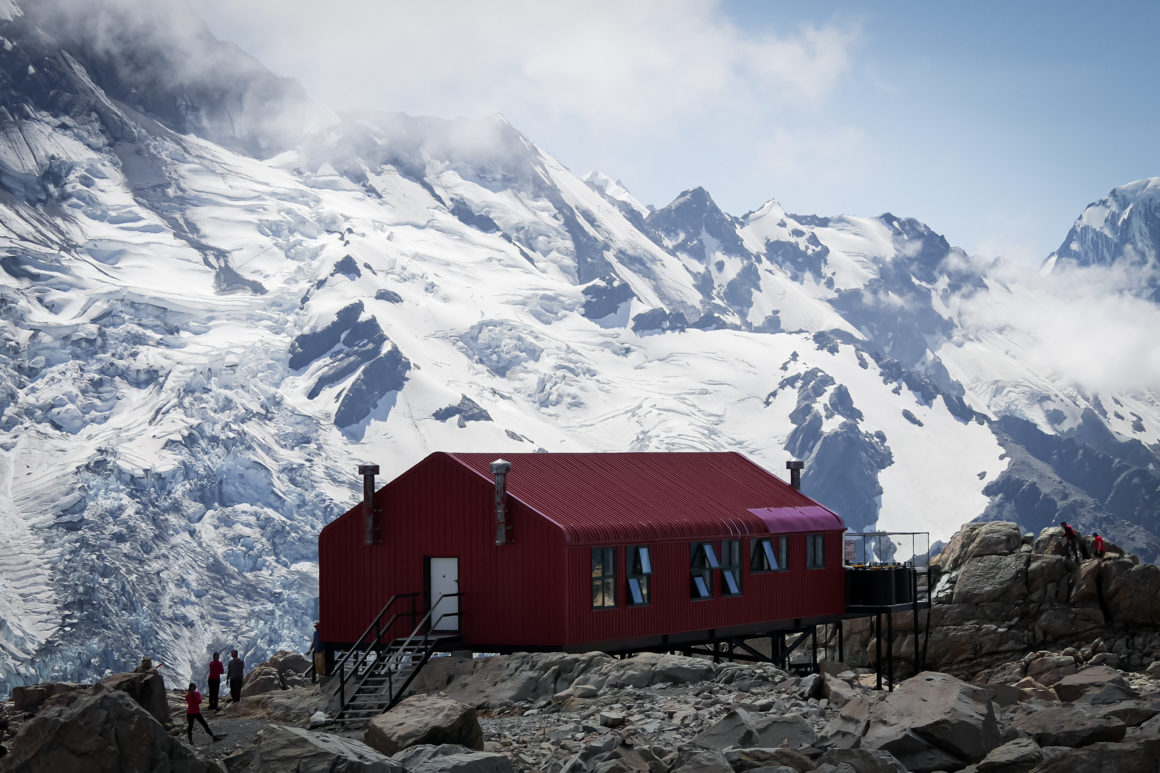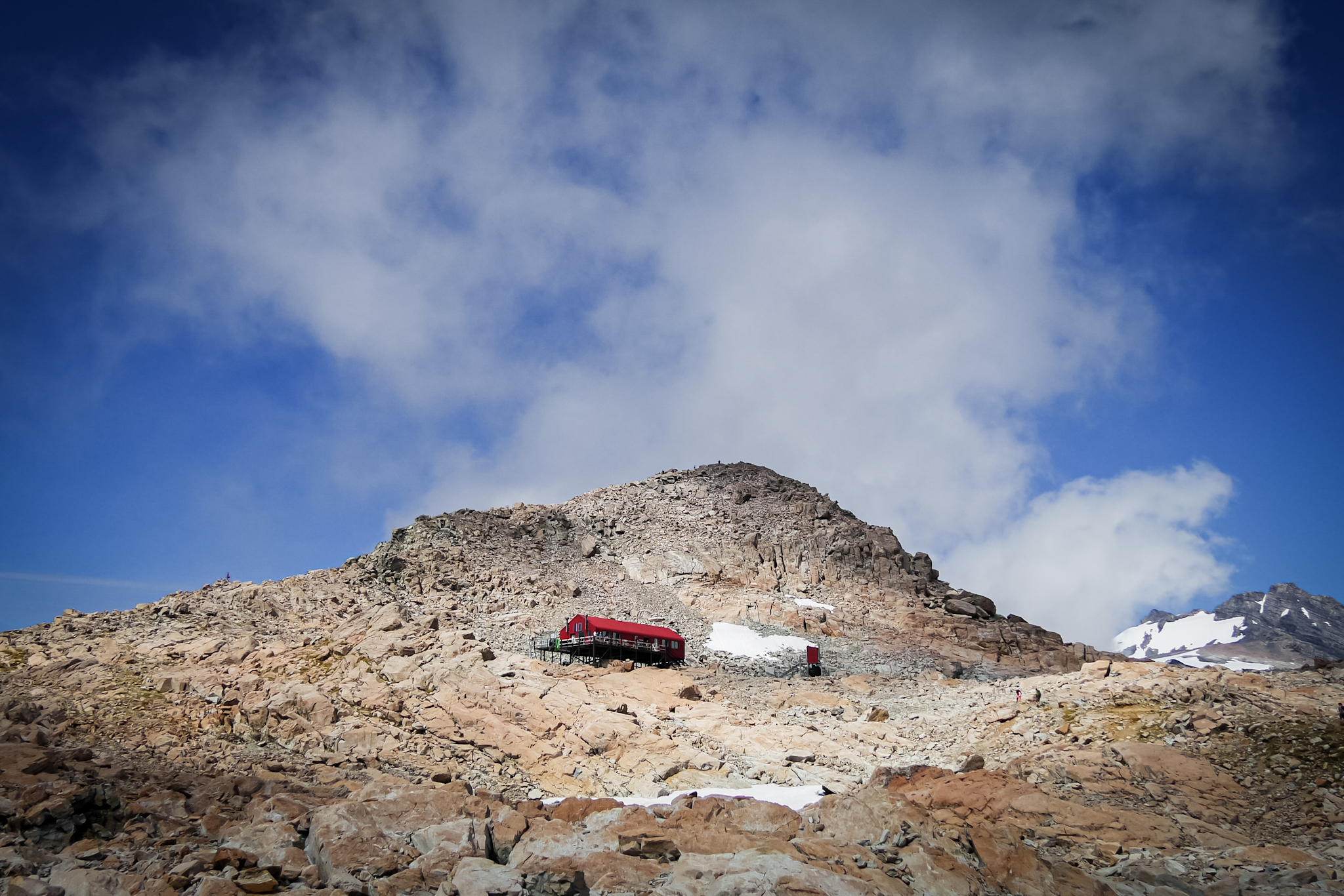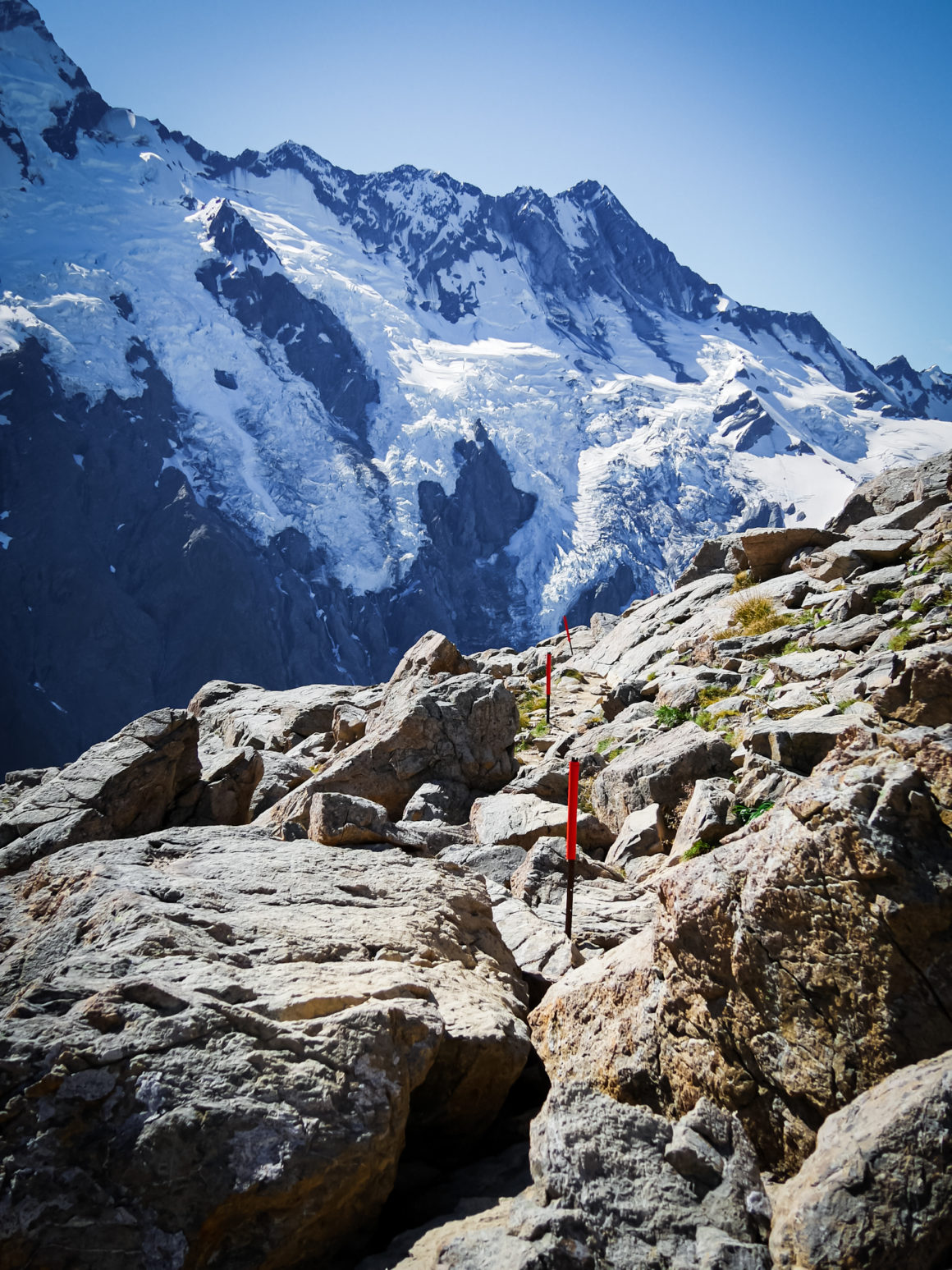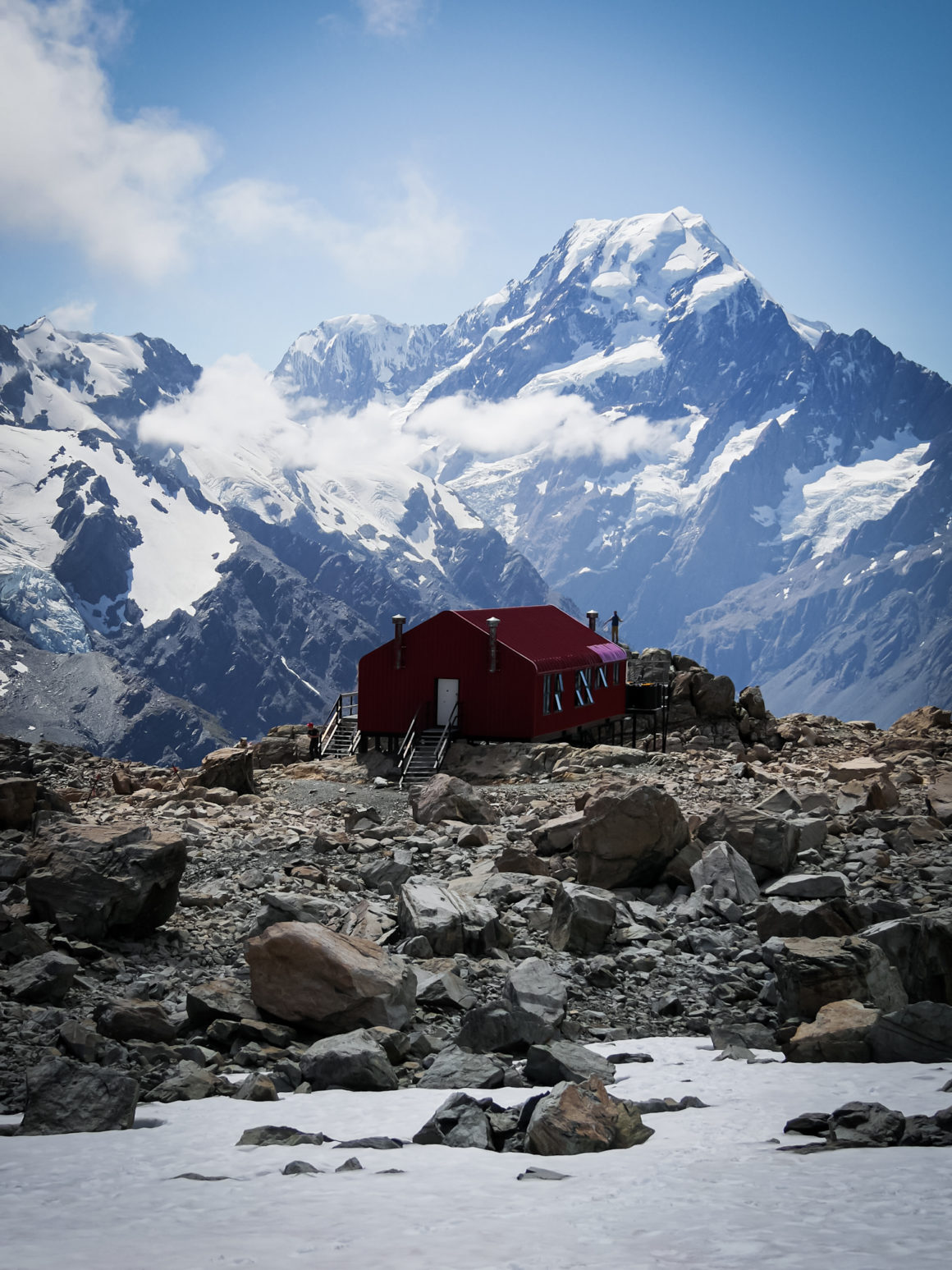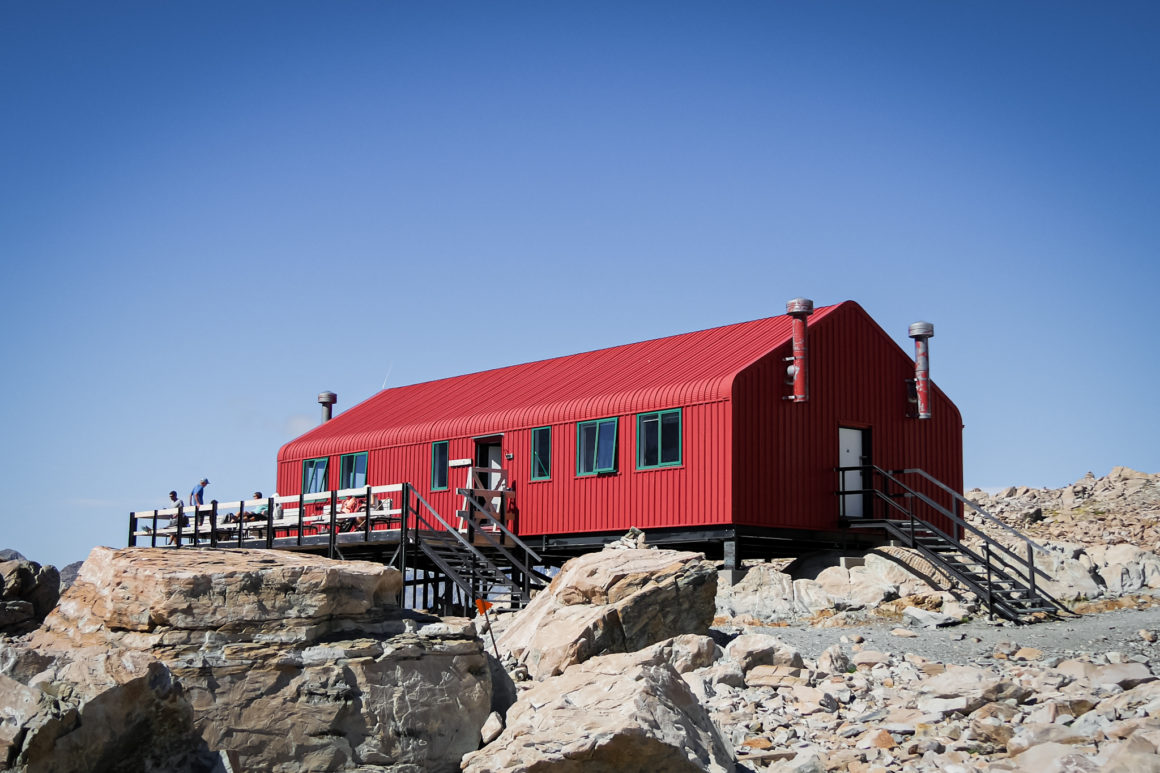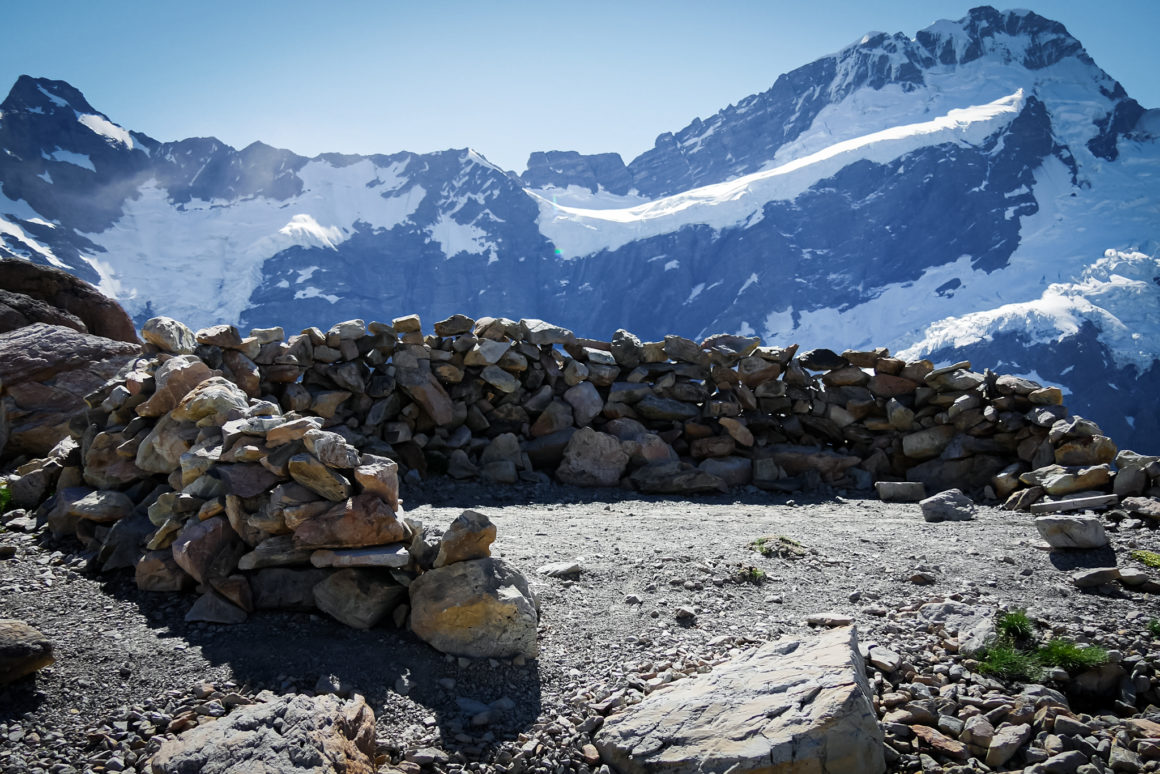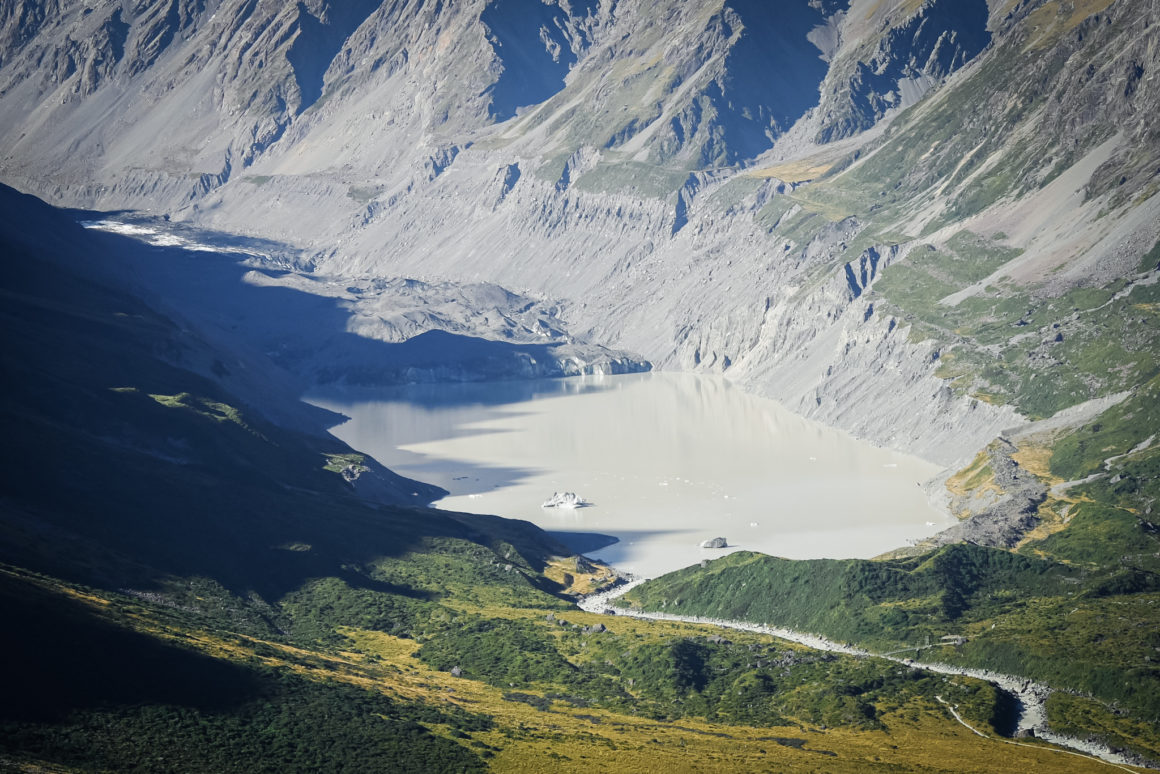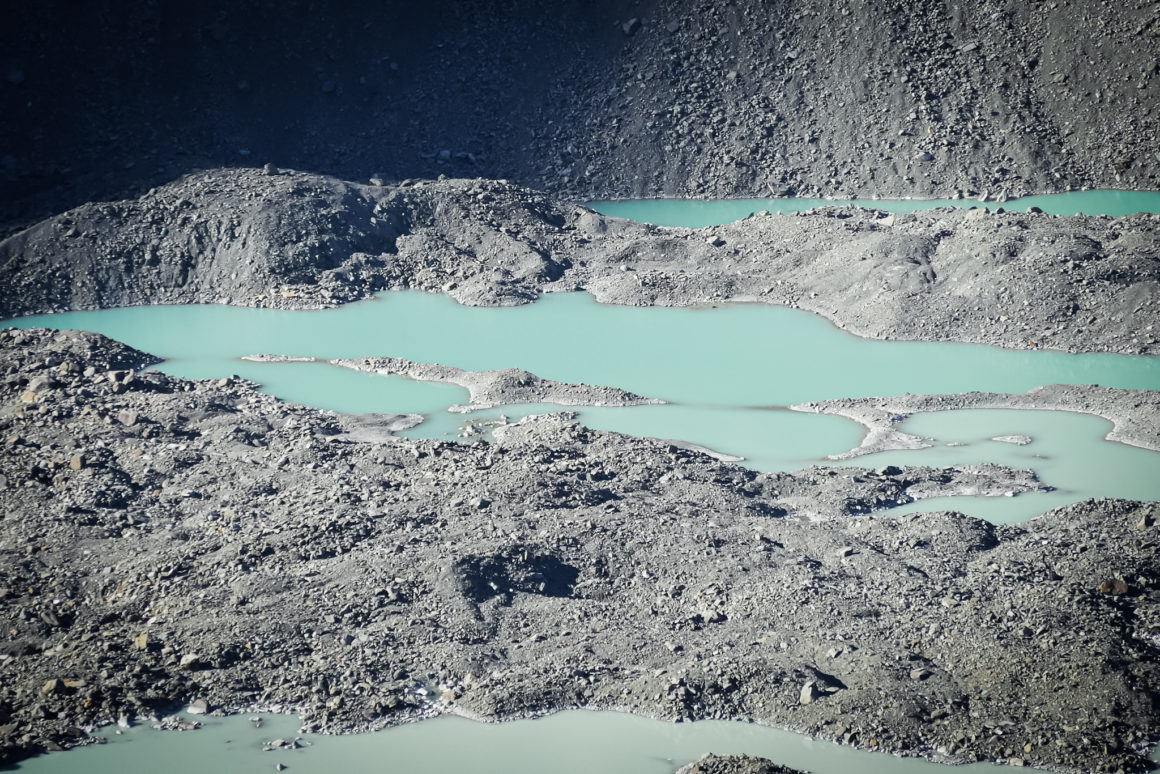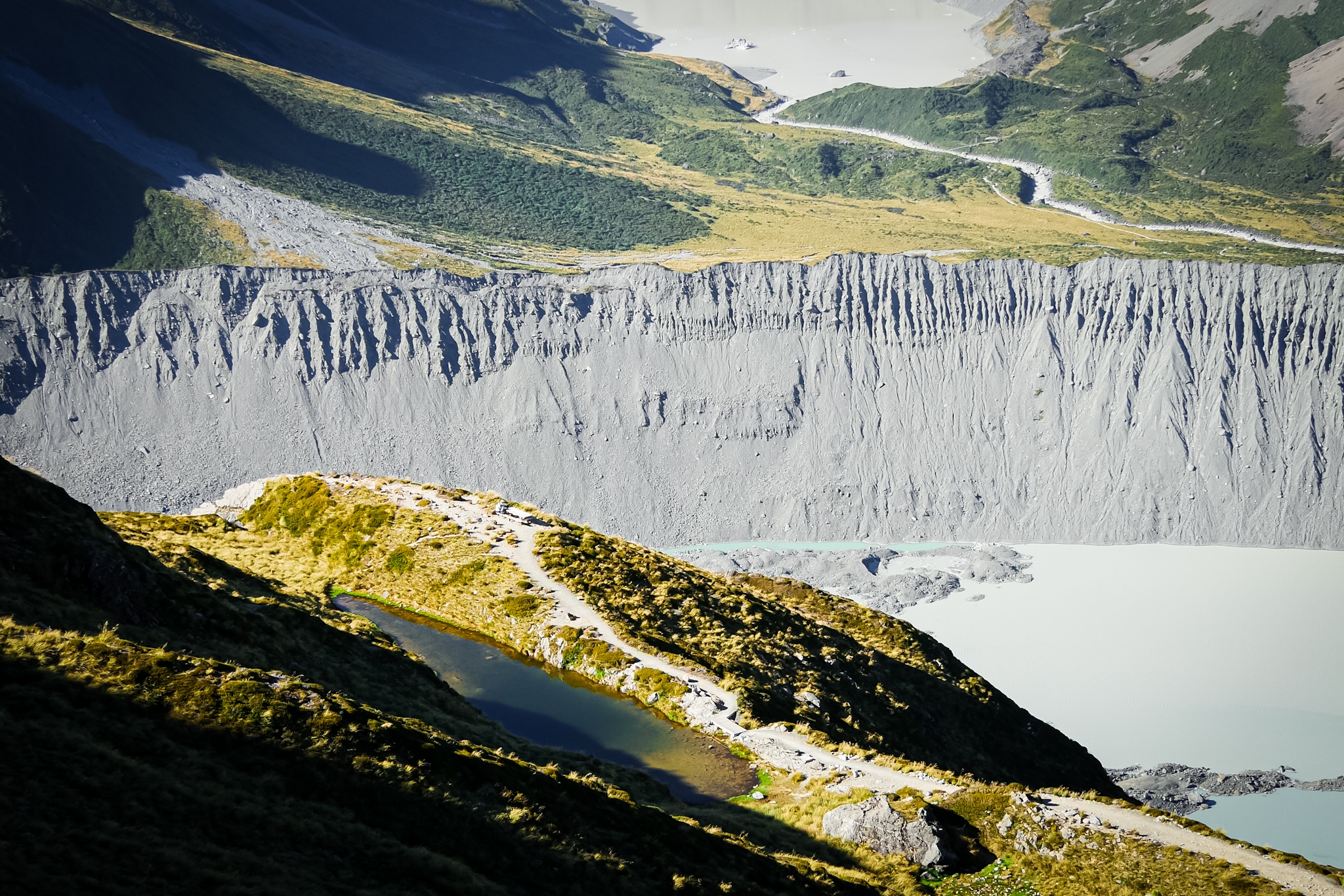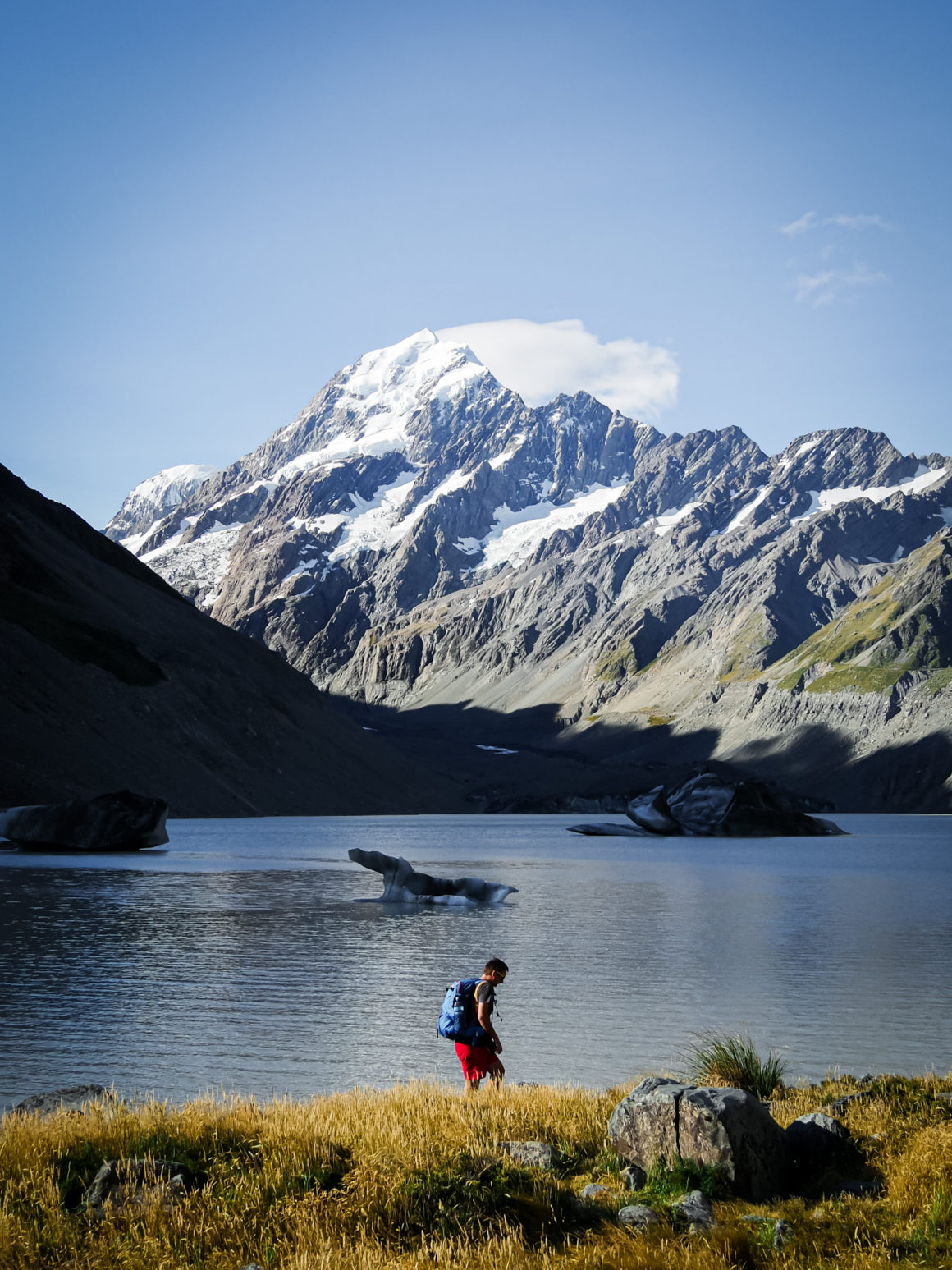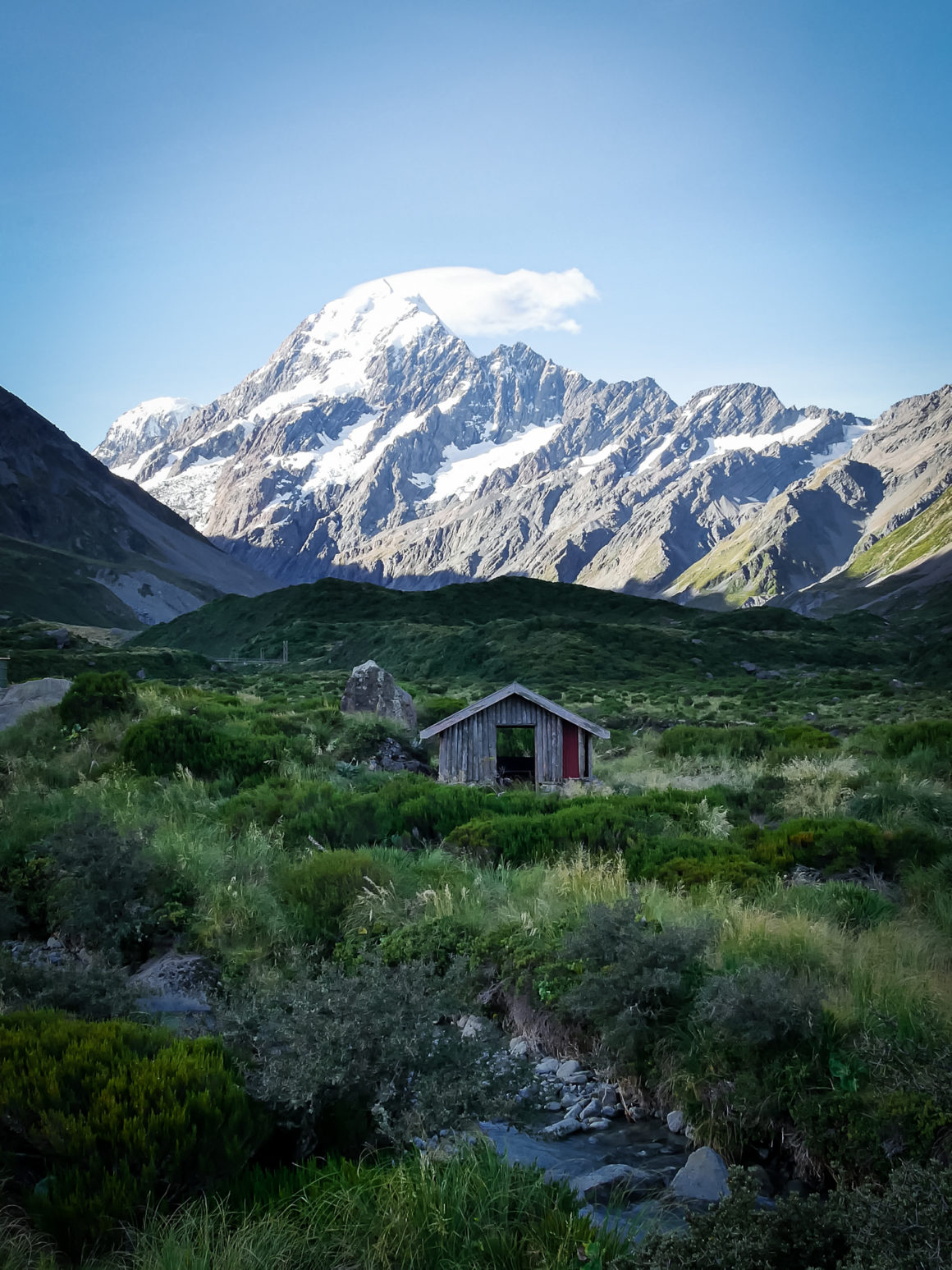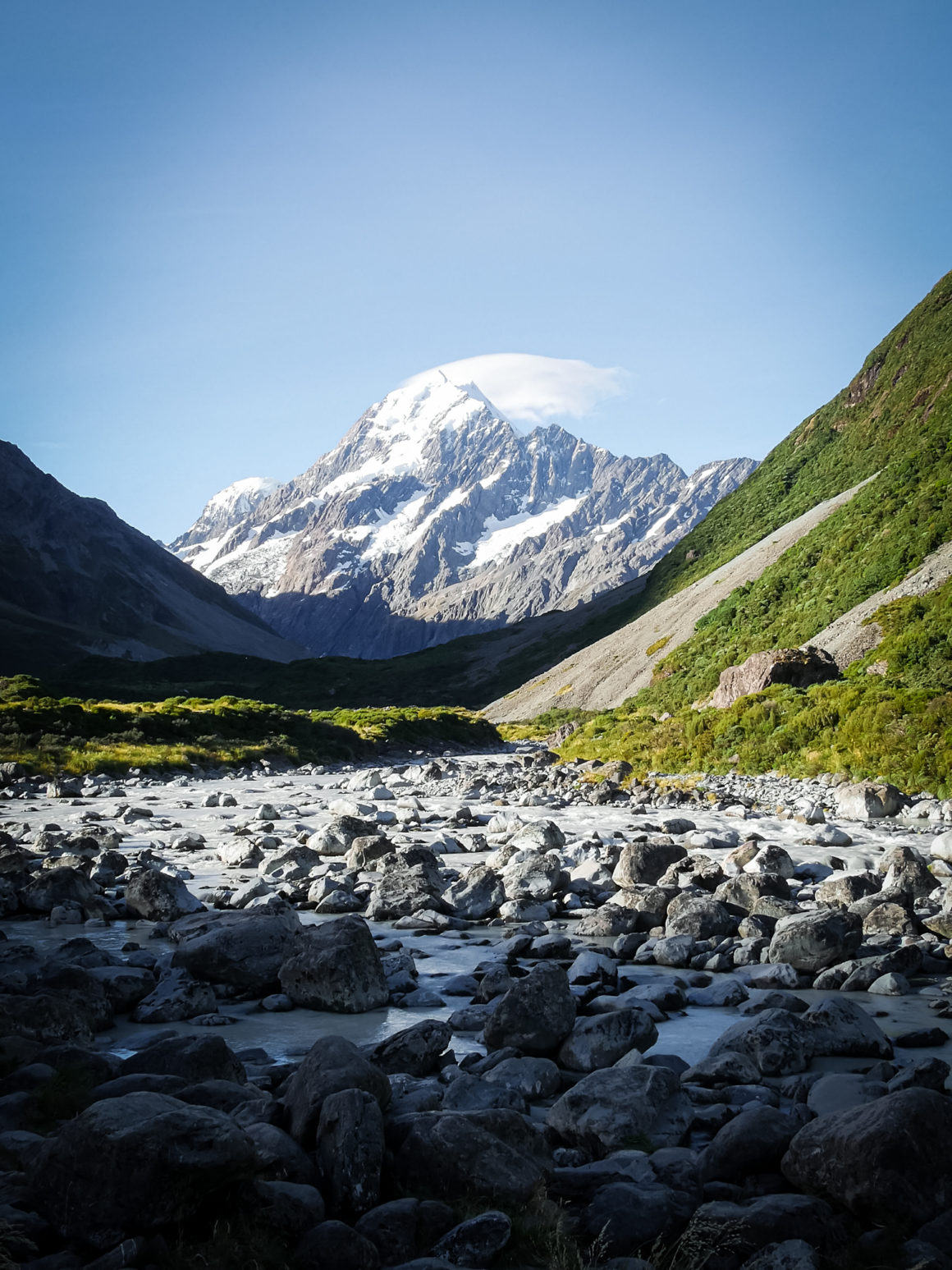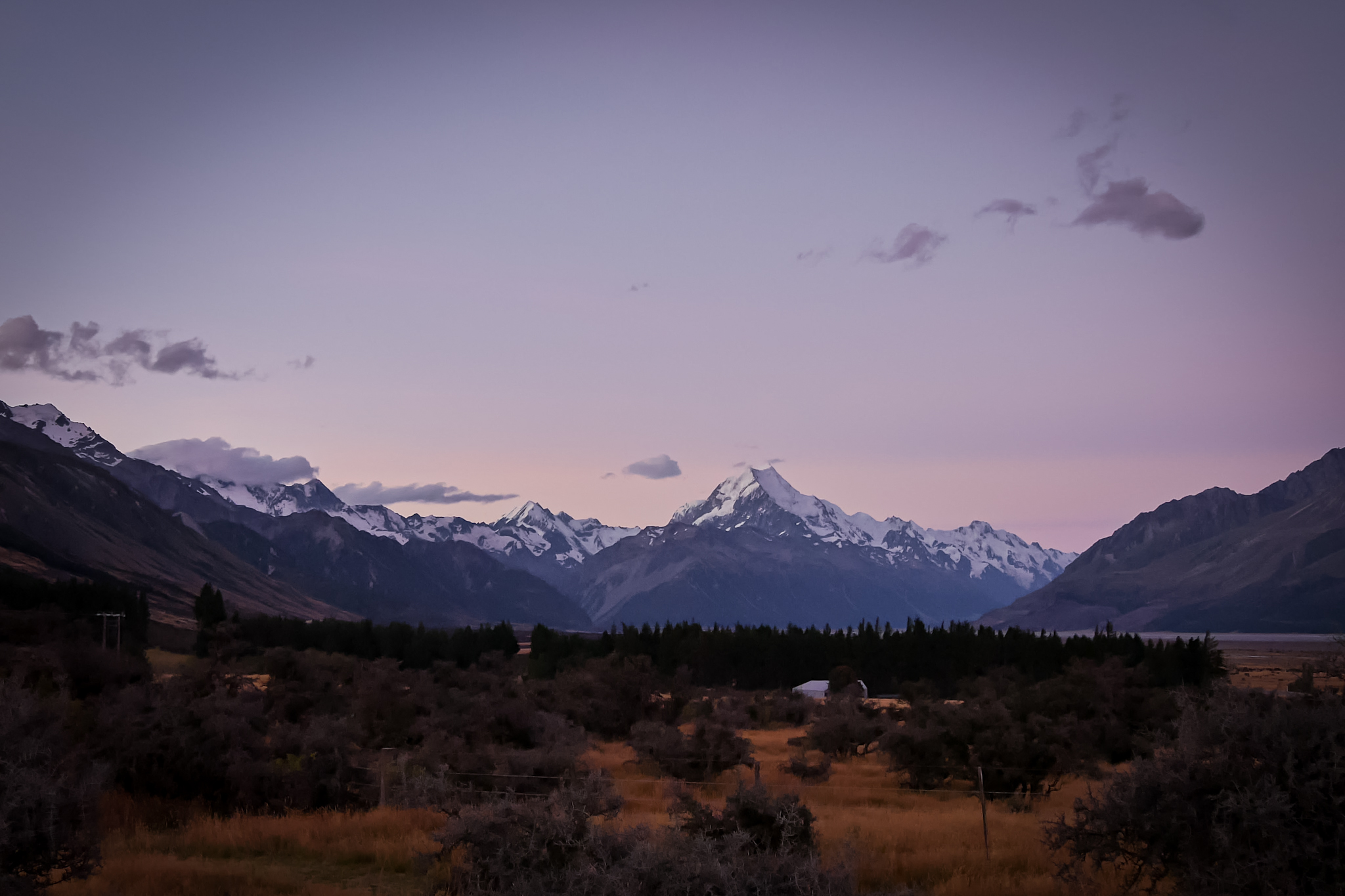DISPATCH
I spend four days at the foot of Mount Cook to rest and visit the national park. The area is magnificent. A large, flat valley sinks into the mountain range. Several large glaciers surround the massifs and large blocks of ice drift over small lakes with milky waters. I do several short hikes and prepare a longer one, but my luck goes away. I thought I would spend the night in Mueller Hut refuge at 1800 meters above sea level, but the refuge is fully booked. The area is very touristy. Bivouac seems to be the only option but the weather conditions are not favorable the night chosen and my plan falls apart. Very disappointed, but not wishing to put aside one of the most beautiful hike in the park, I decided to go just for the day. The ascent to the hut taking only about three hours, it is perfectly possible to make the ascent and descent over a day.
So I leave the Glentanner campsite by hitchhiking to reach Mount Cook village. A lady of German origin takes me in her campervan. She too decided to hike to reach Mueller Hut today. She drops me off at the parking lot and invites me to start before her. She has to prepare herself. I attack the climb and make a small detour to go see Kea Point. The observation point provides a nice view of the moraine wall of the Mueller glacier. The wall is impressive. The impact of global warming is obvious. The glacier has shrunk enormously over the years. In the background I see the glacier and Lake Hooker. It too has shrunk quite a bit. The lake waters are of an impressive milky blue / white color. The path continues via the Sealy Track, an ascent of 2,200 steps to reach the Sealy Tarn, a small lake at around 600m above sea level. The stairs go up steeply following the ridge of the mountain. God it is hard! Climbing irregular steps that never end in a blazing sun is painful. Especially for my knees a little damaged by my last days on the bike. On the other hand, the landscape is splendid. The different valleys reveal themselves little by little and I realize the beauty of the place.
I arrive at Sealy Tarn, a very small water point where I take a short break before continuing on the Mueller Track. The path becomes less marked and climbs across the mountain. The soil changes from clumps of grass to large pebbles and scree. The landscape is almost lunar. Opposite, the Murchison Glacier suggests crackling noises to anyone willing to listen. The snow cracks under the effect of heat. Several booms are heard regularly. Small avalanches occur. I spot several of them. From a distance, their size seems very small but the noise associated with the echo is impressive. Whenever the mountain thunders, I realize its power and its dangerousness. Once on the ridge, the path follows up to a small circus overlooked by Mount Olliver where the hut appears all dressed in red. The refuge appeals to me instantly. Its architecture combined with its color make the construction very aesthetic and fits perfectly with the surrounding landscape. The Mueller Hut that I contemplate is the fifth construction to bear this name. The previous four were destroyed by inclement weather or unstable terrain. The mountain soil in the region is mainly made of rocks made up of sands, mud and silts welded together by pressure and heat, then bent and fractured by the intense geological activity which agitates the region. Therefore, finding a sustainable location for a refuge is quite difficult. The last version of the hut dates from 2003.
The area is really beautiful. I go around the circus and see several spots for tents. People removed the large stones from the ground to make it flat and built small walls around the pitches to protect them from the wind! What a disappointment, I could have very well camped here in the end. But it is too late, I did not take my tent with me. A little disappointed, I nevertheless try to enjoy my time here. I spend three good hours resting and enjoying the scenery. Then around 4pm I go back down. The descent to Sealy Tarn is quite slow, the slope is steep. The sun gently descends in the sky, making the brightness more warm. I descend the 2200 stairs without hurrying enjoying the magnificence of the landscape. Back at the car park, I hitchhike again to return to the campsite. An English couple take me with them in their gigantic motorhome. My disappointment at not being able to camp on the summit is still there. The English folks drop me off at the campsite and I spend a quiet evening staring at the stars. The next day, I wake up in particularly strong gusts of wind. The weather forecast was right. It comforts me a bit of my aborted bivouac. At almost 2000 meters in the pebbles I would probably have been very cold.

